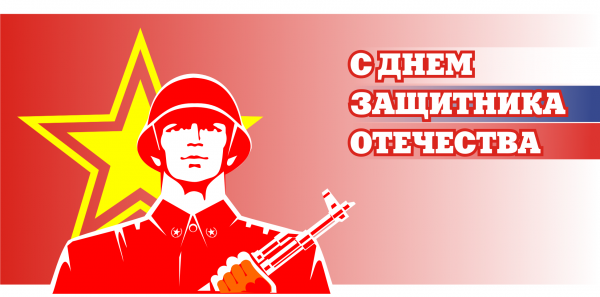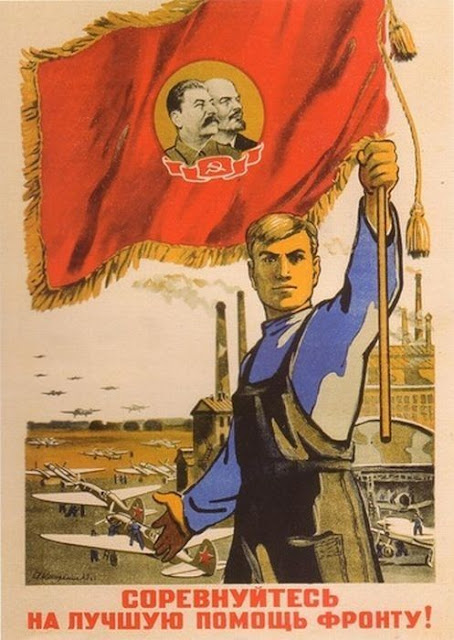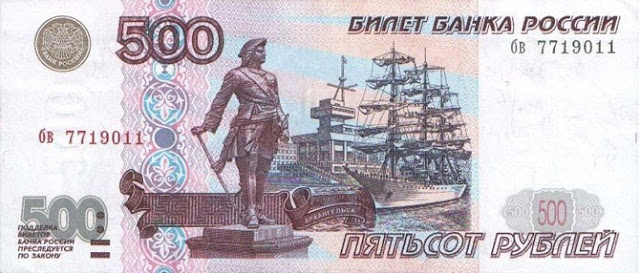Defender of the Fatherland Day is a holiday celebrated on February 23 in Russia, Belarus, Ukraine, and Kyrgyzstan. Was set in the Soviet Union in 1922 as the "Day of the Red Army and the Navy." From 1949 to 1993. was called "The Day of the Soviet Army and Navy." After the collapse of the Soviet Union also continued to celebrate the holiday in a number of CIS countries. In fact, despite the name of this holiday congratulate all the men even if they have not served in the military. This holiday is a holiday. Informal celebration starts a day earlier. Therefore, the majority of official establishments and the private companies in the second half of day don't work. All celebrate! Try not to plan any serious affairs on the eve of February 23. Read more about this holiday can be here.
Friday, February 22, 2013
Defender of the Fatherland Day in Russia
Defender of the Fatherland Day is a holiday celebrated on February 23 in Russia, Belarus, Ukraine, and Kyrgyzstan. Was set in the Soviet Union in 1922 as the "Day of the Red Army and the Navy." From 1949 to 1993. was called "The Day of the Soviet Army and Navy." After the collapse of the Soviet Union also continued to celebrate the holiday in a number of CIS countries. In fact, despite the name of this holiday congratulate all the men even if they have not served in the military. This holiday is a holiday. Informal celebration starts a day earlier. Therefore, the majority of official establishments and the private companies in the second half of day don't work. All celebrate! Try not to plan any serious affairs on the eve of February 23. Read more about this holiday can be here.
Thursday, February 21, 2013
Balalaika. Most Russian musical instrument.
Vodka, caviar, bears, nested dolls and a balalaika is the main symbols of Russia. These are the main stereotypes. In addition, it is believed that on the Russian balalaika probably playing only one tune Kalinka Malinka (theme Tetris). But I suggest to listen as a musician Alexey Arkhipovsky playing on the balalaika. On a modern electric balalaika. Yes, do not be surprised! If there is an electric guitar, then why can not be electric balalaika?
I will cite just one of the opinions about the musician in the magazine “America”:
“The sounds of three strings now brought on the audience the energy of the Niagara Falls, then soared like a quite crane over a lake surface, then seeped like honey from honeycombs in May.”
“The sounds of three strings now brought on the audience the energy of the Niagara Falls, then soared like a quite crane over a lake surface, then seeped like honey from honeycombs in May.”
Look at the wonderful fragment of the concert of the musician Alexey Arkhipovsky. Melody called "The Road Home."
Full concert can be seen and heard here.
Wednesday, February 20, 2013
Soviet military posters of times of World War II
I would like to tell about little-known side of any war. Of course, in any war the soldier is the main force. However, the soldier will not be able to fight without weapons and without food. Therefore, supply for the army is very important for the victory over the enemy. And propagandize this idea for the people in the rear is it very important. Slogans in these posters should be simple and clear. Such as the famous slogan: "Everything for the front, everything for victory." Or these slogans can be such:
All the forces of the rear to help the front!
Compete for the best help to the front!
Comrade check whether you have all done to help the Red Army!
Drivers of cars! Continuous, quickly and in time, with no breakage and accidents delivers cargoes to the front.
Give the front of more weapons and ammunition to defeat the enemy.
The people and the army invincible
The shock work is guarantee of defensive power of the USSR.
Harvesting is terrible blow to the enemy.
More metal is more weapons!
Tuesday, February 19, 2013
Meadowland (Polyushko,polye). Perhaps, this is one of the best songs in Russian
Meadowland (Polyushko,polye). This song was written in 1933. The song is dedicated to the events of the Russian Civil War (1918-1921). The music was composed by Lev Knipper, with lyrics by Viktor Gusev. The text of this song has changed a lot over time.
In the first version there is mention about the Soviet military commander Klim Voroshilov (known hero of the civil war, associate of Stalin). After the death of Stalin mention of it was gone. In the modern version of the word "Red Army heroes" are replaced by the words "heroes of the past". I don't know exactly which version is better. It seems to me that each of the versions conveys the spirit of his time.
The modern version of this song sings Japanese singer Origa (real name Olga Yakovleva, she was born in the USSR and later she made career in Japan). In this video is used a fragment of the film about the civil war ("The First horse army", 1986).
Meadowland (Polyushko-polye). Modern text.
Field, my field,
My wide field.
The heroes ride over the field,
Heroes of the past.
The wind scatters your brave songs
Across the green field.
Songs of the past,
Leaving them alone with your glory,
And right at the end, on a dusty road…
Field, my field,
My wide field,
The heroes ride over the field,
Heroes of the past.
Field, my field, has seen so much misfortune.
It was drenched in blood,
The blood of the past.
Field, my field,
My wide field.
The heroes ride over the field,
Heroes of the past.
The wind disperses your brave songs
Across the green field.
Songs of the past,
Leaving them alone with your glory
And right at the end, on a dusty road…
Field, my field, has seen so much misfortune.
It was drenched in blood,
The blood of the past.
Field, my field,
My wide field…
This song performed by Red Army chorus and dance ensemble.
Meadowland (Classic text)
Oh Field, my field, my wide field,
The heroes ride over the field,
hey, the heroes of the red army.
You girls, cast a glance,
cast a glance in our direction,
Wave far down the road
Eh, the happy road
Hey, girls, look,
we are ready to engage the enemy
Our fleet-footed horses
our fast-driving tanks
Aaaaaah... Aaaaaaah...
Our fleet-footed horses
our fast-driving tanks
Hey, while on the collective farms,
the work is efficiently progressing,
Today we are scouts,
today we are keeping watch.
You girls, look here,
girls, wipe off your tears!
The louder let us sing our song,
hey, our pugnacious song.
Oh Field, my field, my wide field,
The heroes ride over the field,
hey, the heroes of the red army.
But most of all I was struck by performance of this song chorus of Chinese people's police.The Chinese are well sung. I hope they well translated this song into Chinese language.
Monday, February 18, 2013
Aviation of the Northern fleet has started to patrol the Northern sea route
The Northern Sea Route - the shortest sea route between the European part of Russia and the Far East, historically rooted unified national route for transportation cargos in the Arctic. The importance of this route for Russia is permanently increasing. From behind the considerable melting of ice on the Northern sea the stream of transported cargos has increased considerably. And by 2020 it should reach fifty million tons and become the main route of cargos delivery in the Asian region.
Aviation of the Northern fleet has started to patrol the Northern sea route. Flight missions in polar latitudes fulfilled the crew of the Il-38 and Tu-142. The main tasks for the pilots is it ensure the safety of navigation and implementation of aerial reconnaissance in the Arctic waters.
The Northern fleet already was here in the autumn of 2011 year. Then for the first time along the Northern sea have passed grouping of military ships. Headed this mission the nuclear missile cruiser "Peter the Great". Now and naval aviation on the IL-38 starts regular patrols of strategic importance to the country's shipping route. "Planes fly over long distances in the air up to 10 hours, - says Sergey Checherov, Acting Chief of the Northern Fleet naval aviation - they can perform various tasks, from searching submarines to assist vessels in distress."
The Ilyushin Il-38 is a maritime patrol, anti-submarine warfare and anti-shipping aircraft. In spite of the fact that the aircraft was developed in 1967 and is gradually becoming obsolete, he is still able to perform their tasks. Production comprised up to 65 aircraft.
Russia ups gold production 7% to 226 tonnes in 2012
On
preliminary results, in 2012 in Russia extracted 226 tons of gold that
approximately on 15 tons (for 7%) it is more, than in 2011 declared the head of
the Union gold getters of Russia Sergey Kashuba .
"Own
extraction and production made 222 tons. Plus about 4 tons is a gold in
concentrates. About 8.5 tons are a secondary production", - noted Kashuba
at a forum "Precious metals of Russia and the CIS".
If the
world prices for gold are will remain at rather high level, Russia can increase
production of gold by 5% annually till 2020.
The main gain of gold mining in Russia is provided by the largest gold
mining companies of the country "Pole Gold" and "Polymetal".
Among the
countries leaders on production of gold in the world are China, the USA and
Australia. Russia in 2012 year kept the fourth place in the world by the
production of gold. Also in
2012 year Russia became the largest buyer of gold in the world. Over the
last ten years the Bank of Russia purchased 570 tons of gold that for 25%
exceeds the volume of purchases of China which took the second place.
However
Russia takes only the eighth place in the world on the volume of stocks of
gold. On the first place there are USA with a gold stock in 8,134 thousand
tons, they are followed by Germany (3,391 thousand tons) and IMF (2,814
thousand tons). Italy, France, China and Switzerland settled down on the fourth
or seventh places respectively.
Friday, February 15, 2013
Modern Russian money
The unit of currency of Russia is the ruble. One ruble is equal to 100 kopecks. Now used coins in denominations 1, 5, 10, 50 kopecks and coins in denominations of 1, 2, 5, 10 rubles. So look modern Russian kopecks.
And here is a modern Russian rubles in coins.
Coins of 1 and 5 kopecks are practically not used. gradually cease to be used coins of 10 and 50 kopecks. Probably the smallest coin, for which you can buy something it's a coin of 1 ruble. For example, 1 ruble worth a box of matches.
In addition, in Russia now used such banknotes: 5, 10, 50, 100, 1000, 5000 rubles.
The banknote in 5 rubles now replaced by a similar coin and is very
rarely used. The banknote of 10 rubles is gradually being replaced at
the coin.
What you can buy at 5 rubles? For five Russian rubles you can buy a small bar of chocolate or you can
buy ballpoint pen, or this money will suffice for short local call by
the cell phone (2-3 minute).
What you can buy at 10 rubles? For ten Russian rubles you can buy a small bun or newspaper.
For 100 rubles it is possible to buy a double cheeseburger with small bottle of cola or a luminescent energy-saving lamp or charger for mobile phone.
500 rubles is enough for 2 bottles of vodka,
juice (2 liter), two kilograms of apples, bread (750 grams) and tea in
pack (100 grams) or for that money you can buy a cheap cell phone.
The dinner in inexpensive cafe or restaurant on the average costs 1000 rubles. Or for the same money it is possible to buy ticket on the train from Moscow to St. Petersburg.
The minimum subsistence level in Russia about 5000 rubles
(on this money it is possible to live about a month). Certainly, this
doesn't include payment for the apartment, electricity and water.
Subscribe to:
Posts (Atom)



























